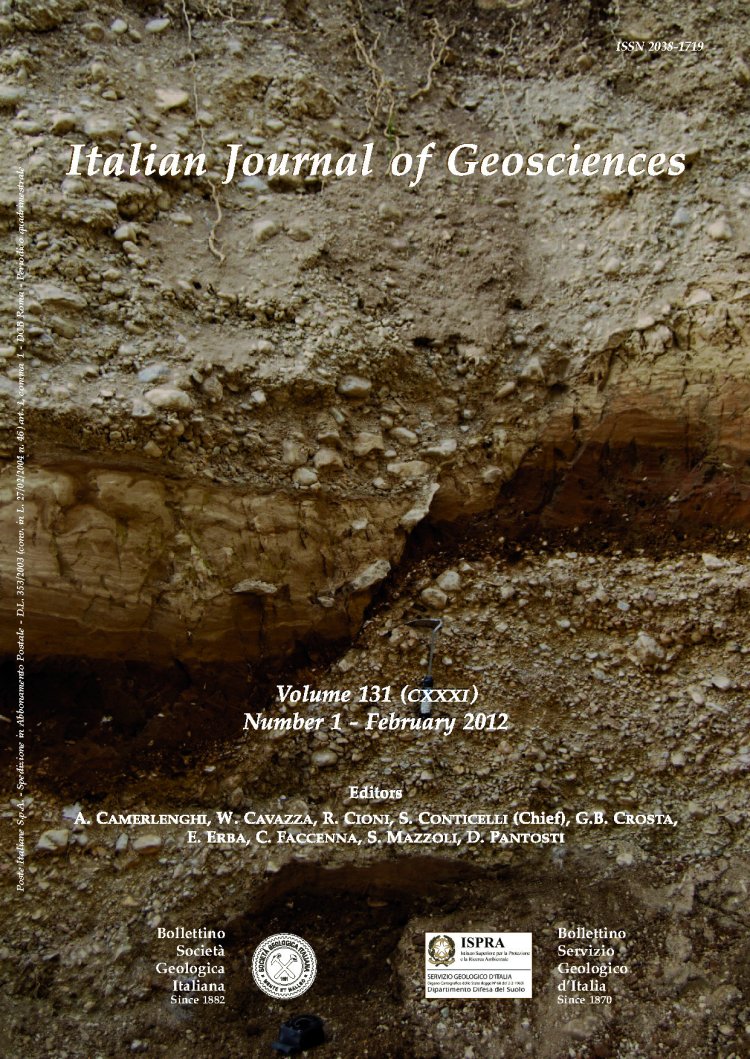
The Cretaceous-Eocene succession of the Rocca Busambra(Western Sicily, Italy): a patchy record on a dissected palaeostructural high
Carlo Bertok(*), Ramona Capizzi, Luca Martire & Francesco Dela Pierre
(*) Dipartimento di Scienze della Terra, Via Valperga Caluso, 35 - 10125 Torino Italy. E-mail: carlo.bertok@unito.it; phone number: +39 011 6705335; fax: +39 011 6705339.
Volume: 131 (2012) f.1
Pages: 32-46
Abstract
A detailed study has been carried out, integrating biostratigraphy, sedimentology and physical stratigraphy, on Albian-Eocene pelagic sediments (Hybla and Amerillo formations) of the western sector of Rocca Busambra (Trapanese Domain, Western Sicily). They mainly consist of pink to greyish mudstones to packstones with abundant planktonic foraminifera and display the same lithofacies as the well known Scaglia formations, typical of the coeval Southern Alps and Apennine successions. These Scaglia-type sediments commonly occur as isolated sedimentary bodies with a marked lenticular geometry and highly variable thicknesses (from few decimetres to tens of metres) and ages (from late Albian to middle Eocene). They uncomformably rest, with onlap relationships, on very steep or low angle surfaces incised within the underlying formations that can be the Middle Jurassic-Lowermost Cretaceous Buccheri and Lattimusa formations or the Lower Jurassic Inici Formation. Steep surfaces, in agreement with previous authors, are considered as palaeofault planes, whereas gently sloping surfaces find a better explanation as slide scars. The occurrence of monomict and polymict breccias and megabreccias, interlayered within the succession, document debris flow and rock fall processes and support the scenario of a highly irregular sea floor topography. Albian-Eocene sediments are also found as infillings of neptunian dykes and sills present within the Buccheri or the Inici formations.
Biostratigraphic data evidence the existence of two very long gaps, respectively corresponding to the Berriasian-middle Albian and the late Campanian-late Paleocene intervals, and the time correspondence of sediment preservation as neptunian dyke fills and sea floor accumulation. All these sedimentologic, geometric and biostratigraphic data show that, starting from the late Albian and up to the Eocene, the Rocca Busambra stood as a margin of a submarine plateau dissected by faults in two main distinct episodes of Albian and Paleocene-Eocene age. In such a morphostructural setting, prolonged time intervals characterized by sediment bypass alternated with tectonic events, during which the opening of fractures and fault-related depressions and the generation of slide scars provided suitable settings for trapping and preserving sediments.
Keywords
Palaeoescarpment, Scaglia pelagic sediments, breccias, neptunian dykes, Cretaceous-Eocene, western Sicily.
Get Full Text